International Jet Aviation
Versatile fleet and dedicated team serve charter, management, and humanitarian missions.
By Rafael Henríquez
Managing Editor
Part of the International Jet turbine-powered fleet at APA (Centennial, Denver CO).
In the bustling world of aviation, where precision and safety are paramount, Denver CO-based International Jet stands tall as a beacon of excellence. Since its inception, the company has carved a distinguished niche in the skies, evolving from humble beginnings to become a trusted name in aircraft charter and management services.
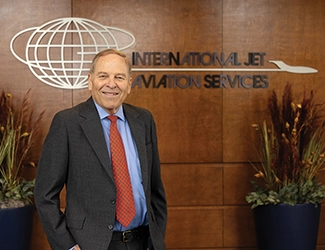
A legacy takes flight
International Jet was founded by Lynn Krogh and Bill Milam in 1979 with a Cessna 421. Milam has since retired, and Krogh now serves as the company’s CEO. He recounts the company’s inception with fondness. Their journey began with a steadfast vision and a commitment to quality service. “I had worked for a previous charter company,” Krogh relates.
“It was an operation similar to International Jet. I learned as much as I could for a couple of years about charter ops. One of the pilots with whom I flew had a brother-in-law who had some investment money and the ability to get something started.”
That person was Bill Milam. Krogh continues, “We started talking, and decided that we could do it ourselves and make a go of it.”
Flight operations
With time, International Jet expanded its fleet to 17 aircraft, offering a diverse range of services to cater to various needs. From cargo transport in the 1980s for industry giants, such as UPS and FedEx, to passenger charters later on, International Jet has mastered versatility in aviation services. “When we first started, 90% of our business was freight and cargo,” explains Krogh.
“But we evolved over the years, based on market needs, and now our business is passenger transportation.” The company’s expertise extends beyond aircraft charter, as it also manages aircraft for individuals and businesses, providing comprehensive solutions from scheduling and crewing to
maintenance.
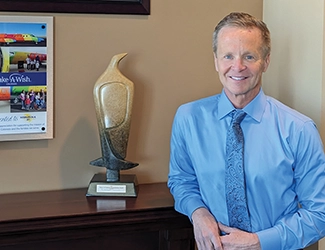
International Jet’s flight operations span North America, with a keen focus on customer preferences and strategic partnerships with FBOs for seamless service. “FBO selection is driven by customer preference,” says Krogh. “On our end, when we choose an FBO, we go with the best fuel pricing we can get, and we have nationwide fuel pricing deals with many FBO chains, such as Signature and Atlantic Aviation.”
President Brian Smith has been with International Jet for 34 years. “I heard about International Jet while I was flight instructing in Houston TX,” he recalls. “I reached out, took the chance, and moved to Colorado.”
Smith started as a copilot. Then he upgraded to captain, and held a variety of positions over the years, including chief pilot, director of training, director of standardization, and check airman.
He worked his way up into different management positions, becoming a company owner while still flying a variety of airplanes.
As company president, his role is to oversee the day-to-day operations from a leadership perspective. “We have such a great team,” he adds. “They know what to do and how to do it. My priorities are to adjust the focus as needed on a daily basis.”
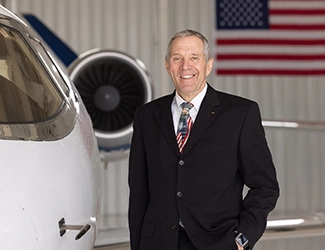
COO Doug Strangfeld is in charge of overseeing everything related to flight activities. He first joined International Jet as a mechanic in 1982, but left in 1995. He eventually came back on board in 2011 as vice president of operations. He holds ATP and A&P licenses, and flies Learjet 60s and 35s for the company. In addition, he’s type rated in the Gulfstream 200 and is currently training to fly Citation Xs.
Strangfeld explains, “My duties involve overseeing all of the flight operations, interfacing with the maintenance department, the aircraft owners themselves, and the accounting and flight coordination that takes place within our operations.”
Aircraft managed by International Jet are assigned a dedicated flight crew that stays with the airplane. “It’s always the same crew,” says Krogh. “There’s either 2 or 3 crew members assigned to a managed airplane, depending on owner preference.”
On the other hand, the aircraft in the charter certificate fly more, so the company assigns rotating crews on them. “There’s a pilot rotation similar to that of the airline world,” he adds. “When an airplane comes back from a mission, that crew may have some days off, and a different crew will take over for the next flight, and so forth.”
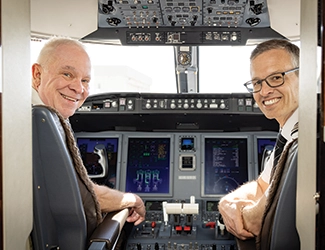
Dir of Operations Justin Lukasavige splits his time between flying and office work. He is a captain and instructor on the Learjet 60, and logs between 300 and 350 flight hours annually.
When he’s not flying or working directly with Strangfeld, Lukasavige keeps busy working with the compliance department, flight coordinators, and the customer service team, or arranging training for company pilots.
Pilot training is a cornerstone of International Jet’s safety policy, ensuring that its crew members are equipped with the knowledge and skills to handle any situation with confidence.
“Pilots attend recurrent training once a year,” says Lukasavige. “We use a combination of training with FlightSafety International (FSI) and CAE, and in-house training with the actual airplanes.”
International Jet’s charter certificate allows them to operate worldwide. However, Krogh describes the Denver charter market as predominantly North American. “Most of our passengers request flights within the US, or to Canada, Mexico, or the Caribbean,” he says. In the US, common destinations include business centers, such as Los Angeles, San Francisco, Seattle, Chicago, Kansas City, Dallas, New York, and Washington DC, as well as recreational destinations, such as Las Vegas and some locations in Florida.
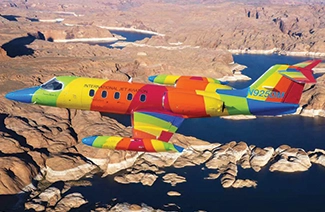
Fleet
International Jet’s fleet embodies versatility and sophistication, and includes everything from agile turboprops to large business jets, catering to a diverse range of client needs and preferences.
The company currently operates 17 aircraft, so passengers can experience the convenience of swift regional hops aboard turboprops, or travel longer distances in comfort aboard large-cabin jets.
Combining the managed Part 91 and Part 135 aircraft, the fleet includes Gulfstream G650 and G550; Bombardier Challenger 605 and 350; Dassault Falcon 900B; Textron Cessna Citation X; Hawker 800XP; Bombardier Learjet 60XR, 55, and 35; KingAir 250 and C90.
Fueling services and other valuable support is provided by Denver JetCenter – a relationship that dates back to the beginning when International Jet was the first jet operator at APA. Now Denver JetCenter and International Jet are the largest operators at the airport, and they still complement each other’s operations.
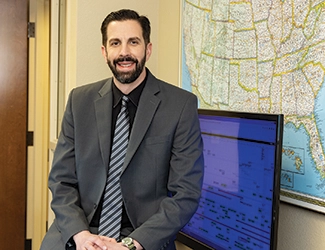
Administrative duties
In a large aviation activity boasting diverse departments, such as International Jet, administrative personnel serve as the linchpin for seamless operations and effective coordination.
VP Administration Chad Butzine is responsible for managing intricate schedules for both aircraft and pilots, organizing flights to meet client demands while adhering to stringent regulatory guidelines.
He also coordinates closely with the maintenance department, ensuring timely inspections and repairs to uphold aircraft airworthiness standards and minimize downtime. He says. “I coordinate all of the departments to a certain degree, although my role is a little more robust in the administration side of things, taking care of accounting, flight coordination, sales, and hangar ops.”
Butzine uses JetInsight for scheduling and keeping records, optimizing workflow efficiency and elevating overall performance within the aviation side of things.
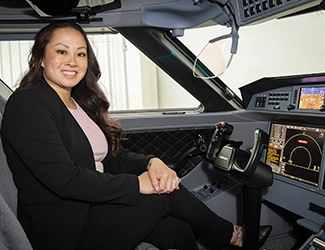
Pilot life style
Many International Jet pilots work on a 10-days-on, 5-days-off rotation. However, since everybody lives in the Denver area, pilots may not fly all the time they’re on duty. “It is not uncommon for pilots to be home in time for dinner at night,” says Lukasavige. “And while pilots may be available for a series of days, they may only fly 3 or 4 days a week.”
Chief Pilot Keith Haines has been with International Jet for 8 years flying the company’s Learjet 35, 55, and 60 twin jets, logging some 350 hours annually. He is a graduate of the US Air Force Academy.
“If I’m not flying, I’m in charge of hiring pilots, training, and making sure my assistant chief pilot works compliance,” he says. “We work together to get check rides and training scheduled for those coming up for upgrade.”
Captain Kristine Bartholomew flies a Gulfstream G650 managed by International Jet for a private operator. She has been with the company for almost 10 years. She recalls, “I started flying the Learjet 35s and 55s, and then I transitioned over to their air ambulance side.”
Bartholomew moved up to captain on the Learjet 35s and 55s, and also flew the King Air 90 to help when the company was short-staffed in the turboprop department. She finally transitioned into the lead captain role on the Learjet 60 and Gulfstream G450 before being offered the captain position on the G650.
Both Haines and Bartholomew find deep fulfillment in their roles and share a joint appreciation for the work/life balance offered by International Jet. Haines relishes the opportunity to mentor new pilots and
collaborate closely with different teams, both in the air and on the ground. And Bartholomew expects her aviation career to keep evolving in the supportive and balanced work environment provided by International Jet.
Krogh shares insights into the company’s employee-centric approach, highlighting generous benefits, such as a 401(k) retirement plan with 100% matching, a comprehensive health care plan, paid vacations, and sick leave. The company’s emphasis on employee longevity and recognition fosters a sense of belonging and dedication among its workforce, ensuring continuity and excellence in service delivery.
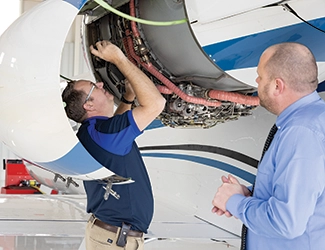
Maintenance
Director of Maintenance Adam Sherak is an integral part of the company’s fabric. He’s been with International Jet for 17 years now, and spends his days overseeing a team of 9 A&P mechanics, and meticulously scheduling maintenance events for the Part 135 and Part 91 aircraft.
The maintenance department’s capacity is extensive. “We can perform any job on our aircraft,” declares Sherak. “We have a maintenance schedule laid out throughout the whole year.
There are unscheduled events that happen. In those cases, depending on the issue, we can dispatch a flightcrew and mechanic to see if they can fix the problem or we swap airplanes.”
International Jet aircraft are enrolled in pay-by-the-hour care programs, which cover inspections and heavy maintenance events for engines and APUs. Sherak continues, “For avionics, we have Honeywell and Collins systems, so we subscribe to their respective programs.”
Much like his coworkers, Sherak remarks how much the company values its employees, and sees himself keeping up with modern technologies to stay on top of his game at International Jet.
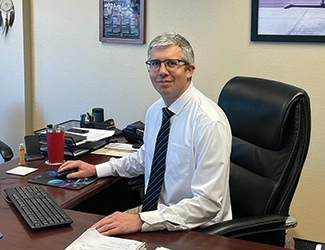
Safety above all else
At the heart of International Jet’s operations lies an unwavering dedication to safety – so much so that the company’s motto is “Safety with Quality and Professionalism.” Krogh emphasizes that the company’s robust safety management system (SMS) is designed to uphold the highest standards in aviation.
“In our industry, safety should be the number one priority,” says Krogh. “We’ve had our safety program for quite a long time.
We started it even before everybody called it SMS. We developed it in-house. We went to a lot of safety seminars in those early days in order to learn the important components of a safety program.”
Director of Safety Steve Bontrager is responsible for the company’s safety protocols. “I handle our SMS, our quality management system, and some of the internal evaluations,” he says. “On a day-to-day basis, it’s mostly just monitoring and seeing and addressing any safety reports or issues that may come up.”
Bontrager inherited the SMS from his predecessors when he joined the company almost a decade ago. “Our SMS is something that we update on a regular basis,” he explains. “We make updates to our SMS based on regulatory changes or vendor requirements, so it keeps maturing over the years.”
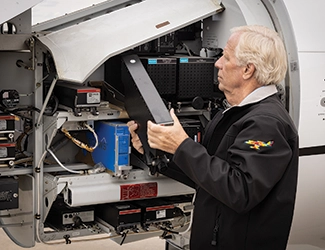
One of the biggest changes happened about 5 years ago, when the company migrated from paper to digital format. “Every report was filled out on paper, and it would take time to get to the correct person,” recalls Bontrager.
We made the transition to electronic, and Baldwin Aviation handles 99% of our needs. They have an online safety program to which we subscribe, so everything is online, which makes it a lot more accessible to all of the employees, no matter where they are.”
International Jet is proud of its impressive safety record, and it has achieved the highest audit rating possible from the International Standard for Business Aircraft Operations (IS-BAO Stage 3). In addition, the company is member of NBAA, NATA, and the Air Charter Safety Foundation.
Community engagement and social responsibility
Beyond business endeavors, International Jet takes pride in giving back to the community. The company regularly donates flights for medical missions and lends its support to various charitable causes. A number of times, International Jet has painted one of their jets in a rainbow paint scheme and flown it throughout the US on charity flights. Christened as the Dream Chaser, it has been used to bring hope and joy to others.
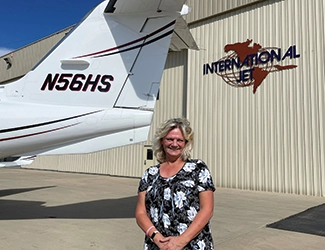
In addition, International Jet employees receive special recognition. “We’re one of the few companies that I’ve ever heard of that has registered airplanes after its employees,” says Krogh.
“The N-numbers of some of our airplanes have been chosen after their birthdays and first/last name initials.” He continues, “We also support a lot of local and national charitable organizations, such as Volunteers of America, the Make-A-Wish Foundation, and Angel Flight West.”
International Jet also honors long-time employees. Anyone who’s been with the company more than 10 years gets his/her picture taken and put up on a dedicated wall along with their name and a plaque.
And if they’ve been there more than 20 years, they’re saluted with a gold crest on their framed picture. Krogh adds, “We have veterans from every branch of the service who have worked for us over the years, and we have a special Veterans Day lunch at our company just for them.”
Looking ahead
With a legacy built on integrity, safety, and service, International Jet remains steadfast in its pursuit of excellence, poised to conquer new horizons in the world of aviation. Its journey from a single aircraft to a renowned charter aviation powerhouse is a testament to the vision, perseverance, and unwavering commitment of its founders and team.
As the company continues to redefine the standards of excellence in aviation, its story serves as an inspiration for aspiring aviators and industry leaders alike, reminding us that with passion and determination, the sky is truly the limit.
